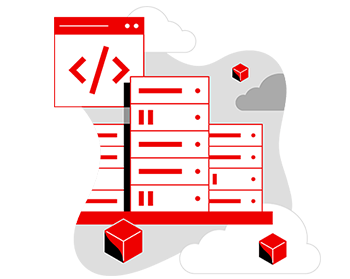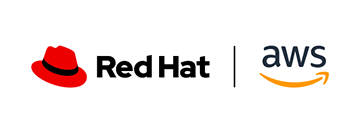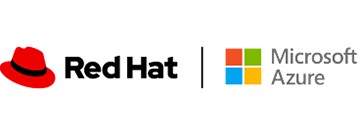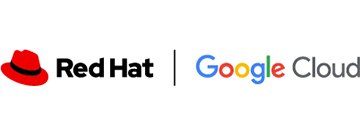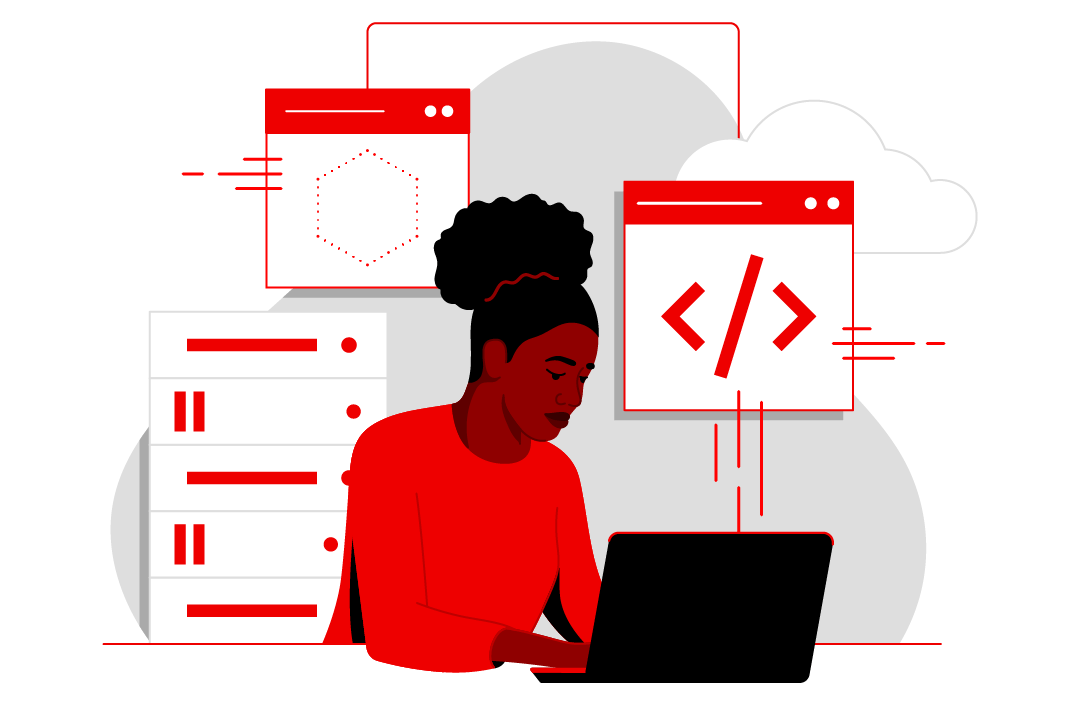Upgrade your Red Hat Enterprise Linux infrastructure
Upgrading to a newer version of Red Hat® Enterprise Linux® doesn’t have to be stressful or disruptive. Red Hat has the resources, tools, and consulting offerings you need to keep your systems running and keep up with the latest benefits that Red Hat Enterprise Linux has to offer.
How to upgrade Red Hat Enterprise Linux
Upgrade procedures and timelines will vary depending on which version of Red Hat Enterprise Linux you are running. Plan ahead for your upgrade, and choose your current version to access appropriate instructions.
Advantages of upgrading
While upgrading to the closest version of Red Hat Enterprise Linux may seem like the obvious choice, an even later version might actually make more sense for you. Staying up-to-date with the latest version not only extends your systems’ support and stability – it also gives you access to the newest features and benefits of Red Hat Enterprise Linux.
Latest news
Red Hat Enterprise Linux 7 End of Maintenance
Red Hat Enterprise Linux 7 will reach the end of its maintenance support 2 phase on June 30, 2024.
It is important to upgrade soon to the latest versions of Red Hat Enterprise Linux to continue to take full advantage of everything Red Hat Enterprise Linux has to offer. This includes new features, security enhancements, bug fixes, cloud functionality, ongoing support and more.
News
Migrating from CentOS Linux?
CentOS Linux 7 will reach End of Life (EOL) on June 30, 2024. Users who migrate to Red Hat will convert their systems to Red Hat Enterprise Linux 7. From there, you can either upgrade to a newer version of Red Hat Enterprise Linux, or you can take advantage of Extended Lifecycle Support (ELS).
Red Hat Enterprise Linux for Third Party Linux Migration with ELS is a new offering that enables CentOS Linux 7 users to maintain continuity in their environment after the EOL date. The offering includes access to Red Hat Enterprise Linux 7 and our supported Convert2RHEL tool for an in-place conversion. Once you’re on Red Hat Enterprise Linux 7, you’ll receive updates and patches for an additional 4 years after June 30, 2024.
Plan your upgrade
- Which upgrade method is best for you?
- An in-place upgrade with leapp allows you to retain your existing infrastructure environment and configuration settings. You can also run a pre-upgrade analysis report and receive remediation advice that you may consider automating to perform upgrades at scale. This is Red Hat’s recommended upgrade method.
- A fresh install involves launching a new deployment of Red Hat Enterprise Linux and manually configuring your workloads.
- Will you use in-house resources for your upgrade project, or will you need assistance?
- Red Hat Consulting Services can help you complete your upgrade project with expert support.
- If your current Red Hat Enterprise Linux software is approaching an EOM life cycle date, will you be able to complete your upgrade project before the deadline?
- If not (or if you’re not sure), consider purchasing a Red Hat Enterprise Linux Extended Life Cycle Support (ELS) Add-on for additional time.
Upgrade by version
Choose your current version of Red Hat Enterprise Linux to track important upgrade milestones, get version-specific instructions, and access resources tailored to your version and where you want to go next.
Upgrade
Red Hat Enterprise Linux 6
Red Hat Enterprise Linux 6 Extended Lifecycle Support (ELS) will end on June 30, 2024.
Red Hat Enterprise Linux 6 users who have an ELS add-on will no longer receive certain Red Hat-defined critical security fixes, selected urgent priority bug fixes, and troubleshooting for the last minor release (6.9). Users still running Red Hat Enterprise Linux 6 must upgrade to a newer version in order to access full functionality and support.
An in-place upgrade is the recommended way to upgrade your system to a later major version of Red Hat Enterprise Linux. To ensure that you are aware of all major changes between Red Hat Enterprise Linux 6 and Red Hat Enterprise Linux 7, consult the Migration Planning Guide before beginning the in-place upgrade process. You can also verify whether your system is supported for an in-place upgrade by running the Preupgrade Assistant. The Preupgrade Assistant assesses your system for potential problems that could interfere or inhibit the upgrade before any changes are made to your system.
It’s important to upgrade from Red Hat Enterprise Linux 6 as soon as possible. Want help? Red Hat Consulting experts can work with you and your teams to develop the practices, tools, and culture needed to accelerate the upgrade process.
Resources
- Assessment: Plan your Red Hat Enterprise Linux upgrade now
- Documentation: Upgrading from Red Hat Enterprise Linux 6 to Red Hat Enterprise Linux 7
- Documentation: Upgrading from Red Hat Enterprise Linux 6 to Red Hat Enterprise Linux 8
- Documentation: Red Hat Enterprise Linux upgrade helper
Upgrade
Red Hat Enterprise Linux 7
Red Hat Enterprise Linux 7 will reach the end of its maintenance (EOM) support 2 phase on June 30, 2024. There are several paths you can take to upgrade to a newer version of Red Hat Enterprise Linux.
If you want to do it yourself, Red Hat will provide you with step-by-step guidance and tools to help you succeed as part of your Red Hat Enterprise Linux subscription.
Leapp is the supported tool used to perform in-place system upgrades from Red Hat Enterprise Linux 7 to 8 without having to reinstall your systems. Included with your subscription, leapp simplifies the upgrade in less time and with less effort than traditional redeployment projects by delivering a single, automatable path to upgrade to the next major version of Red Hat Enterprise Linux. Retain your system’s configurations, subscriptions, and applications, and run a leapp pre-upgrade analysis report to identify upgradability issues and automate remediations where possible to reduce manual intervention.
It is not possible to perform an in-place upgrade directly from Red Hat Enterprise Linux 7 to Red Hat Enterprise Linux 9. However, you can perform an in-place upgrade from Red Hat Enterprise Linux 7 to Red Hat Enterprise Linux 8 and then perform a second in-place upgrade to Red Hat Enterprise Linux 9 when you’re ready.
You can also work with Red Hat’s expert consulting services for a fully-automated upgrade process. If you need more time to upgrade before the EOM date, Red Hat is announcing a one-time, 4 year Extended Lifecycle Support (ELS) maintenance period for Red Hat Enterprise Linux 7.
Planning resources
- Assessment: Plan your Red Hat Enterprise Linux upgrade now
- Blog: End of maintenance for Red Hat Enterprise Linux 7 is almost here
- FAQ: Red Hat Enterprise Linux 7 reaches End of Maintenance Phase and transitions to Extended Life Phase
- Blog: How to automate upgrades before Red Hat Enterprise Linux 7 end of maintenance
- Documentation: Considerations in adopting Red Hat Enterprise Linux 8
- Documentation: Best practices and recommendations for performing Red Hat Enterprise Linux upgrades with leapp
Implementation resources
- Documentation: Upgrading from Red Hat Enterprise Linux 7 to Red Hat Enterprise Linux 8
- Documentation: Upgrading SAP environments from Red Hat Enterprise Linux 7 to Red Hat Enterprise Linux 8
- Video: In-place upgrades using leapp from Red Hat Enterprise Linux 7 to version 8 to version 9
- Video: Avoid obsolescence with in-place upgrades
- Lab: Perform an in-place upgrade with leapp
- FAQ: Leapp upgrade
- Community resource: Leapp supplements
- Community resource: Collection of shared Ansible roles and resources
- Documentation: Upgrade an offline / disconnected RHEL 7 machine to RHEL 8 with leapp
- Documentation: Red Hat Enterprise Linux upgrade helper
Upgrade
Red Hat Enterprise Linux 8
If you want to benefit from the latest features of Red Hat Enterprise Linux, including a more flexible and stable foundation to support hybrid cloud innovation and a faster, more consistent experience for deploying applications and critical workloads across physical, virtual, private and public cloud and edge deployments, Red Hat Enterprise Linux 9 is for you.
Red Hat Enterprise Linux ships with leapp as a supported upgrade management tool, delivering a single, automatable path to upgrade to the next major version of Red Hat Enterprise Linux. Retain your system’s configurations, subscriptions, and applications, and run a leapp pre-upgrade analysis report to identify upgradability issues and automate remediations where possible to reduce manual intervention.
If you have Red Hat Satellite, you can upgrade your systems at scale using the leapp plug-in.
Planning resources
Implementation resources
- Documentation: Upgrading from Red Hat Enterprise Linux 8 to Red Hat Enterprise Linux 9
- Video: Avoid obsolescence with in-place upgrades
- Lab: Perform an in-place upgrade with leapp
- Blog: Procedure to upgrade a RHEL 8 High Availability cluster to RHEL 9
- FAQ: Leapp upgrade
- Community resource: Leapp supplements
- Community resource: Collection of shared Ansible roles and resources
- Documentation: Red Hat Enterprise Linux upgrade helper
Red Hat Enterprise Linux Extended Life Cycle Support Add-on
The Extended Life-cycle Support (ELS) Add-On delivers certain Red Hat-defined critical security fixes, selected urgent priority bug fixes, and troubleshooting for the last minor release of a given version of Red Hat Enterprise Linux.
Red Hat is offering up to 4 years of extended support for Red Hat Enterprise Linux 7. This is a good option if you need additional time to complete your upgrade after the Red Hat Enterprise Linux EOM date on June 30, 2024. Organizations should prioritize plans to upgrade by the EOM date before considering ELS as an option.
Upgrade Red Hat Enterprise Linux in the cloud
In-place upgrades are supported for on-demand Pay-As-You-Go instances on Amazon Web Services (AWS), Microsoft Azure, and Google Cloud Platform with Red Hat Update Infrastructure (RHUI). Browse steps and resources to upgrade based on your cloud provider.
Red Hat Enterprise Linux on AWS
Enable required RHUI repositories and install required RHUI packages to ensure your system is ready for upgrade.
Red Hat Enterprise Linux on Azure
Explore Red Hat Enterprise Linux in-place upgrades on Microsoft Azure based on your version and environment.
Red Hat Enterprise Linux on Google Cloud Platform
Follow the leapp RHUI packages for Google Cloud Platform (GCP) Knowledgebase article.
Install a newer copy of Red Hat Enterprise Linux
Not interested in in-place upgrades?
You can always install a fresh copy of Red Hat Enterprise Linux 8 or Red Hat Enterprise Linux 9 (based on your needs) and manually install, configure, and test your workloads. However, this approach could be riskier as current configurations and security settings must be recreated and tested.
Need help?
Need help? Red Hat Consulting Services has assisted many customers with their Red Hat Enterprise Linux upgrade projects. If you’re looking for assistance, Red Hat Consulting Services can share their expertise and guidance to help you get there, and possibly save you time and money in the process.

